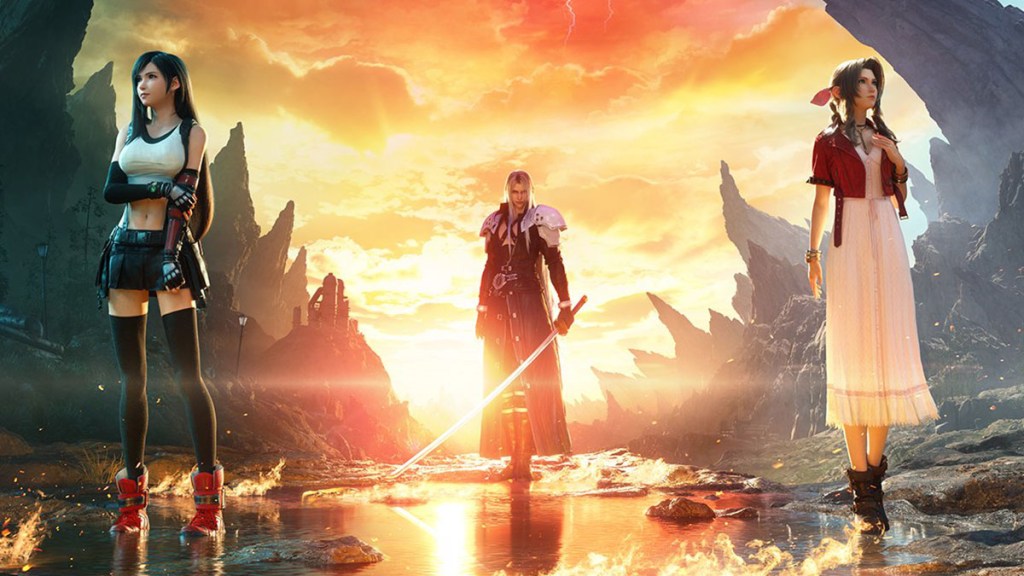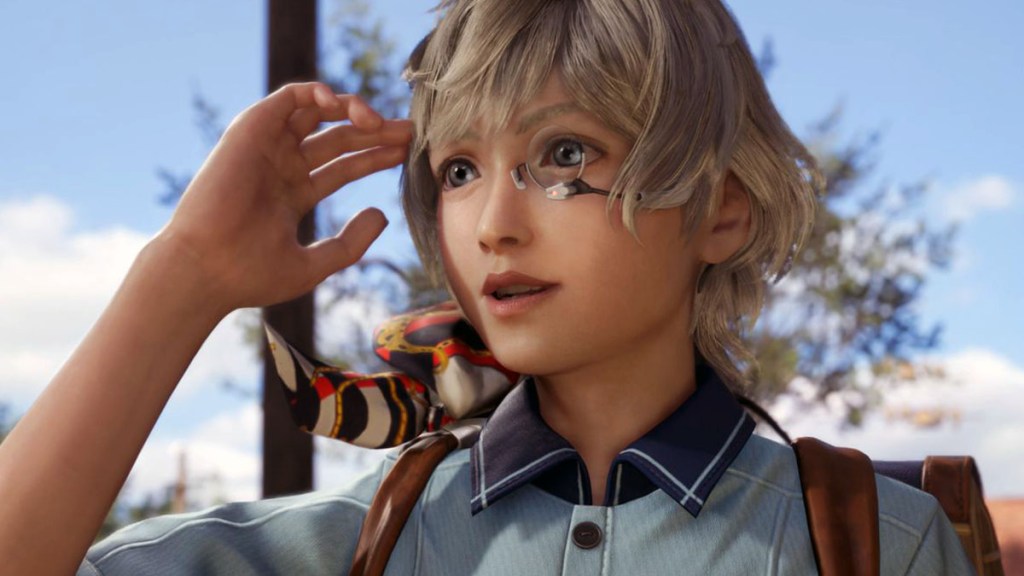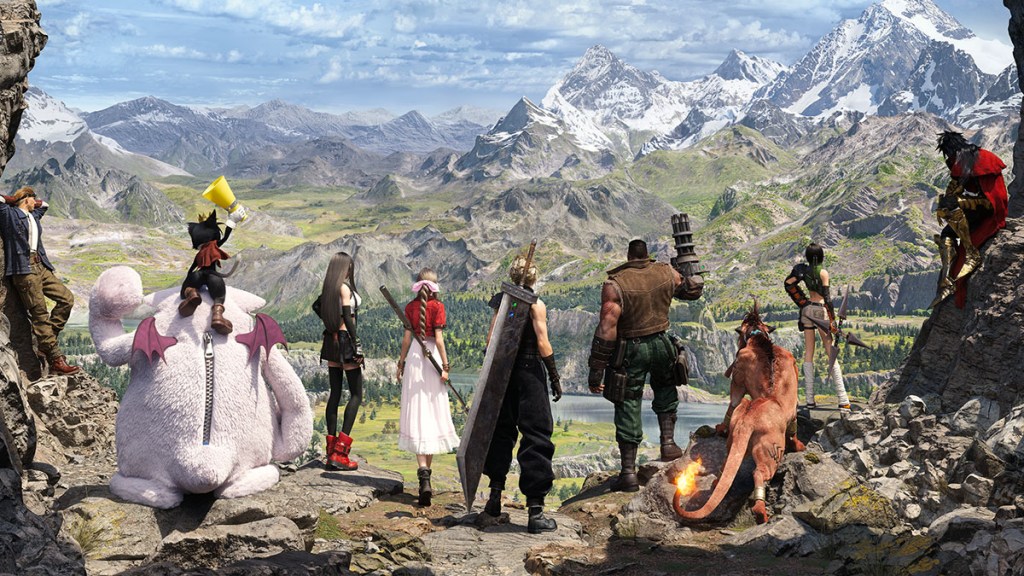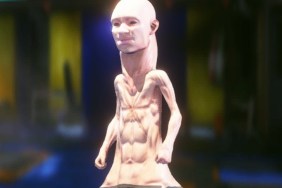Final Fantasy 7 Rebirth picks up during our heros’ flight from Midgar and takes us across the world in pursuit of the villainous Sephiroth. After a fantastic introduction to the trilogy with FF7 Remake, we’re thrust into a game with a much broader scope and an open world. In the run-up to launch, we had to wonder if Square Enix could get things right out from under the steel pizza or if this part-reimaging, part-sequel was doomed to fail.
Please note that this review is aimed toward fans of the original. As such, there are some spoilers for those who have only played FF7 Remake.

A faithful adaptation

While many fans (myself included) were apprehensive that the appearance of the Whispers would be used as an excuse for an abridged storyline, that’s far from the case. Despite the twist we saw in Final Fantasy 7 Remake, Rebirth mostly follows the same path as the original.
While almost all the equivalent content made its way into Rebirth, everything is writ larger in Rebirth. In particular, Kalm, Gongaga, and Costa Del Sol have been expanded considerably, and you’ll spend hours discovering new aspects to these locations. Some of these locations were only a few screens in the original, so filling in the gaps took more imagination than it did to recreate Midgar. As such, don’t expect everything to line up exactly the same way.
For example, Gongaga was a completely optional area in the original, and the only reason to visit was to grab the Titan Materia. However, in Rebirth, it’s been expanded to a mandatory part of the game that consists of its own region. As such, while it takes cues from the original, it’s effectively a new location because of how much is added and the new story content found there.
Fortunately, most of the new story elements sync up well with the old. However, some odd choices exist, like having a character from the shuttered The First Soldier free-to-play game take a prominent role in world events. It also seems like the devs struggled with what to do with Yuffie and Cid. Despite having a solid introduction in FF7 Remake Intermission, Yuffie seems a bit weird in Rebirth. She’s awkward, constantly talks about obtaining materia, and doesn’t show the character growth one would expect after the events of Intermission.
Conversely, Cid is introduced without much fanfare as the face of a regional fast-travel mechanic. Rocket Town is omitted entirely, and his personality has been changed from a short-tempered, cranky chain smoker who hates Shinra to a sweet-hearted philanthropist with a southern drawl. Unfortunately, he and Vincent aren’t playable characters this time, so aside from a few scenes, you don’t get the same attention to their backstory as you do with the rest of the party.
Finding a reason to fight
If you’re new to the series, I recommend starting with the original or Remake. I can’t see how anyone would have the proper context to get the maximum enjoyment from Rebirth without having context for the party’s journey.
Rebirth starts in media res, and in the scheme of things, not that much happens as far as the overarching story. For much of the game, Cloud and party are chasing Sephiroth based on whatever clues they can find, and it’s not until the climax that this really pans out.
Instead, Rebirth is about filling in details about our party’s backstory and the world they live in. You see how Shinra’s world domination has affected the planet and the weight Cloud, Barret, Tifa, Aerith, and Red XIII carry because of the company’s actions (Yuffie unfortunately has to wait as Wutai isn’t in this entry).
It’s also a journey of discovery. Coming from modest backgrounds, most of the party isn’t particularly well-traveled. For example, Barret’s excitement in seeing the spiritual center of Planetology, Cosmo Canyon, is palpable.
There are also plenty of story-based side quests featuring a host of memorable characters, many of them which are new. There’s also a massive amount of minigames to partake in, including a fully-featured collectible card game called Queen’s Blood, all of which help lighten the mood after particularly heady scenes.
The Chadley problem

Unfortunately, not all the side content isn’t as well integrated as it could have been. Spread throughout the regions of Gaia are points of interest like Remnawave Towers, Combat Assignments, Summon Crystals, and Life Springs. These are all termed Regional Data and are used to “gather intel” for Chadley. Ostensibly, you’re doing this so he can develop new materia for you, which is a relatively minor feature in the scheme of things. However, for some reason, the developers decided to make him a key element in the game, and he has by far the most lines of any NPC (and probably some of the main party) in Rebirth.
Early on, Chadley gives you the CHAD Module, which is a combination scanner and cell phone. From that moment, you will hear from him around every 5-10 minutes for almost the rest of the game. If he’s not flagging you down to research intel, then he’s reminding you that there’s intel to research. Only during the linear story sequences are you not subject to an almost constant Chadley cacophony. But, you’re not even safe there, as he frequently interjects in the plot as well.
Chadley is a hamfisted way to justify the generic side content, and it could have been handled much better. Why not assign a type of content to each character so that it feels organic? Aerith could ask you to track down Lifesprings so she can communicate with the planet, while Tifa might want to fight the strongest fiends around to hone her martial arts. Chadley doesn’t need to be around to facilitate Summon Materia, either. Each of them is a part of the history of the region they’re found in, so why not hide them away and make the Summon Crystals clues to find them?
Chadley feels artificial and out of place in a game that otherwise spends so much time getting every little detail right. There was not one moment where I thought he added anything to the experience, and he actively dampened my immersion in this carefully crafted world.
Final Fantasy 7 Rebirth: The Final Verdict
Final Fantasy 7 Rebirth is a stunning game that bridges an excellent start and what’s sure to be a thrilling conclusion. Unfortunately, being stuck in the middle puts a lot of weight on the game, which makes it strain in some areas. However, it’ll only be possible to appreciate its merits once the final chapter is complete. Only then will we have the context to see how well Rebirth succeeded or failed. For now, I’d lean toward it being a resounding success that translated the original material wonderfully while also adding a few twists that will have even long-time fans wondering what will happen next.
Positives and Negatives
-
Filled with wonderful recreations of iconic locations.
-
Faithful to the original with twists for longtime fans.
-
Some locations omitted (presumably to be added to the final game).
-
Chadley is featured way, way too much.







